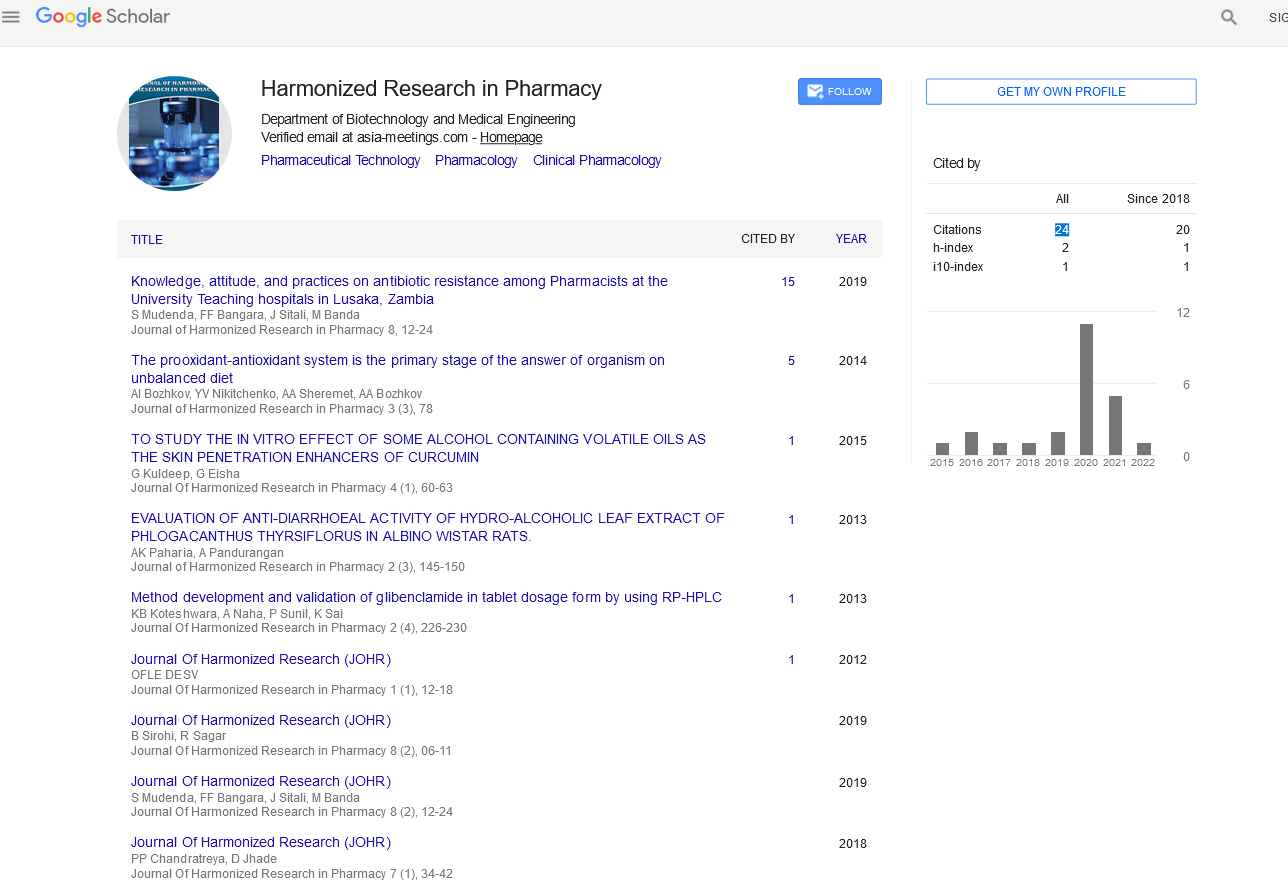Commentary - (2022) Volume 11, Issue 1
THE PROCESS OF DISCOVERY AND METHODS OF A DRUG DESIGN
Ming Wang*Received: Mar 01, 2022, Manuscript No. JHRP-22-62441; Editor assigned: Mar 04, 2022, Pre QC No. JHRP-22-62441 (PQ); Reviewed: Mar 18, 2022, QC No. JHRP-22-62441; Revised: Mar 25, 2022, Manuscript No. JHRP-22-62441 (R); Published: Apr 04, 2022, DOI: 10.30876/2321-0958.22.11.179
Description
Drug discovery is the process of identifying potential new therapies using a combination of computational, experimental, translational, and clinical models. Despite advances in biotechnology and an understanding of biological systems, drug discovery remains a long, costly, difficult and inefficient process, with a high failure rate for discovering new treatments. Drug design is an ingenious process of finding new drugs based on knowledge of biological targets. The simplest drug designs include molecular designs that are complementary in shape and charge to the molecular targets that interact and bind. Drug design in the big data era often, but not always, relies on computational modeling techniques and bioinformatics approaches. Structure-based drug design is most effective when it is part of the overall drug discovery process. It is also important to consider that structure-based drug design facilitates the discovery of drug guides, which are compounds that are not pharmaceuticals, but specifically compounds that have at least micro molar affinity for the target. As explained in this overview, the time spent on the structure-based drug design process is only a fraction of the total time to develop a marketable drug. Using computer algorithms, links or fragments of links from the database are placed in selected areas of the structure. These compounds are evaluated and ranked based on steric and electrostatic interactions with the target site, and the best compounds are tested using biochemical assays. In the second cycle, sites on the compound that can be optimized for efficacy by structuring the promising lead from the first cycle and the complexed target.
The choice of drug discovery target is primarily based on biological and biochemical grounds. The ideal target macromolecules for structure-based drug design are closely related to human disease and bind small molecules to perform their functions. Target molecules usually have well-defined binding pockets. Other designed small molecules may compete with natural small molecules for the level of efficacy required to regulate the function of the target. Many good drug discovery targets are proteins. However, drug design was effective against RNA targets with well-defined secondary structures, such as bacterial ribosomes and parts of the HIV genome. Cancer targets are often somatic variants of proteins that regulate essential cell function and can be difficult because they result in loss of function. Of course, it is difficult for small molecules to enhance their recovery of function. Once you have identified the target, you need to get accurate structural information. Crystal structures are the most common source of structural information for drug design because specific structures are available in high resolution, and this method is useful for proteins ranging in size from a few amino acids.
Once the structure and destination are identified, there are several ways to develop good leads based on the structure of the destination. These paths can be broadly categorized as computer-aided or experimental. On the other hand, an example of an experimental method is high-throughput combinatorial chemistry screening. This screening test the biochemical effects of thousands of compounds. Structure- based drug design is a powerful technique when used as an in-armory tool for discovering new drug leads to particularly important targets. After selecting the target and its structure, you can design new leads according to chemical principles or choose from a subset of small molecules that work well when docked to the target silicon. After a preliminary bioavailability assessment, candidates go through an iterative process to re-enter structure determination and reassessment for optimization.

Google Scholar citation report
Citations : 147
Journal of Harmonized Research in Pharmacy received 147 citations as per google scholar report









